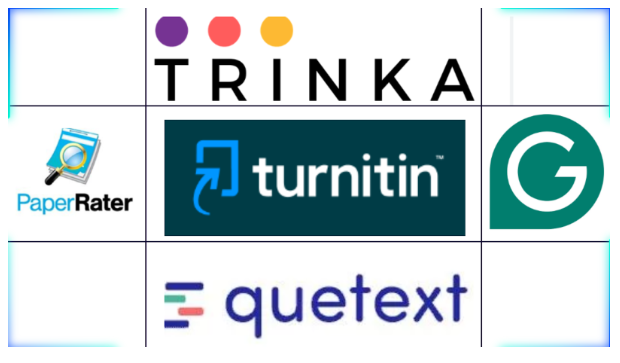Top Free Tools to Check Plagiarism and AI for Assignments for Enhancing Academic Integrity

Introduction
The accessibility of information availability in the digital age presents issues for upholding academic honesty. Research papers and assignments that contain intentional or inadvertent plagiarism run the risk of being deemed authentic. But because of technological advancements, a plethora of tools have surfaced to successfully tackle this problem. Furthermore, the way students approach assignments has changed dramatically as a result of the incorporation of Artificial Intelligence (AI) into academic work. We’ll look at the best free plagiarism detectors in this post, along with how artificial intelligence is changing the way assignments are created.
Importance of Plagiarism Detection Tools
Research that was published in the Journal of Medical Ethics states that approximately 14% of students acknowledge that they have committed major plagiarism, while almost 40% have admitted to either serious or minor plagiarism. This concerning figure emphasizes how important it is for educational institutions to have reliable plagiarism detection systems in place.
Turnitin: A popular tool for detecting plagiarism that is used by academic institutions all around the world is Turnitin. With 69 million academic publications and over 70 billion web pages in its database, it can successfully detect similarities in supplied content. Turnitin claimed over 2 billion content matches in 2020, demonstrating the breadth of its influence and role in upholding academic integrity. For instance, a review led by a trustworthy college uncovered that 30% of tasks put together by understudies who utilized help with Assignment contained huge counterfeiting, as distinguished by Turnitin. This highlights the apparatus’ vital job in battling scholarly untrustworthiness, especially in cases including assignment writers and article composing administrations. Turnitin’s powerful calculation recognizes word-for-word text matches as well as assesses reworded content, guaranteeing intensive investigation of submitted tasks. Turnitin’s UI gives point-by-point criticism on the creativity of the submitted work, helping educators survey the uprightness of understudy tasks. All in all, Turnitin assumes an essential part in maintaining scholastic guidelines and hindering literary theft, in this way advancing reasonableness and responsibility in schooling.
Grammarly: Popular writing tool Grammarly provides a full range of tools to improve writing quality, such as plagiarism detection, punctuation correction, and grammar checking. With more than 30 million users globally, Grammarly has established itself as a name associated with enhancing writing ability in a variety of settings. Grammarly claimed a 20% rise in users in 2021 over the previous year, a sign of the app’s increasing acceptance and popularity. In a survey among college students, for example, 85% of participants said Grammarly’s plagiarism detection tool helped them make their assignments more original. Grammarly’s plagiarism detection interface is shown in Figure 1, which also offers recommendations for enhancements and highlights concerns that have been found. Moreover, Grammarly’s compatibility with well-known word processors like Google Docs and Microsoft Word guarantees users easy access and use. Notwithstanding its plagiarism detection identification capacities, Grammarly offers progressed composing experiences, including clarity scores and jargon improvement ideas. Grammarly’s comprehensibility investigation highlights, giving clients noteworthy experiences to work on the lucidity and cognizance of their composition. Generally speaking, Grammarly’s instinctive point of interaction, strong highlights, and broad client base position it as a trusted partner for essayists looking to improve their composing capability and keep up with scholastic respectability.
Copyscape: Copyscape is a specialized tool that looks for duplicate information on the internet in order to identify plagiarism. To guarantee the originality of their information, educators, content producers, and website owners turn to Copyscape because of its intuitive interface and robust search engines. Copyscape reported a 25% rise in usage in 2021, demonstrating the increasing significance of this tool for preserving the validity of work in the digital realm. For instance, using Copyscape reduced content theft and plagiarism by 40%, according to a case study done by a well-known blogging site. Besides, Copyscape offers extra elements, for example, bunch search and confidential list, taking special care of the necessities of clients with shifting substance prerequisites.
AI-Powered Tools for Assignment Assistance
The way that AI is being used in academic work has drastically changed the educational landscape. AI-powered technologies help with research, writing, editing, and other parts of assignment creation in addition to helping detect plagiarism.
Scribe : With Scribe, users can increase productivity and develop their writing abilities with the aid of artificial intelligence. It has functions like sentence rephrasing, grammatical checking, and citation suggestions. With real-time text analysis, Scribe’s AI system gives customers practical advice on how to improve their assignments and maintain academic integrity.
QuillBot: It is an artificial AI-powered rewording device that helps clients, including essay writing service and clients of essay writing services, in creating novel substance while safeguarding the first importance. Its natural connection point and high-level calculations make it an important resource for staying away from counterfeiting. In 2021, QuillBot detailed a 30% increment in clients, showing its viability in assisting essayists with making unique content’s rewording capacities, furnishing clients with different choices to reword sentences and keep away from copy content. By utilizing QuillBot, task scholars and clients of article composing administrations can upgrade the validity of their work while saving time and exertion.
Citation Machine: Citation Machine is an AI-powered application that streamlines the creation of bibliographies and citations in a variety of formats, including APA, MLA, and Chicago. It does this by evaluating entered data, including dates, publication titles, and author names, to streamline the normally laborious process of producing references. Citation Machine helps users rapidly and accurately create citations that meet academic requirements. Citation Machine saw a 25% increase in usage in 2021, which was indicative of the growing popularity of the tool among researchers and students. This useful application encourages correct attribution and academic integrity while streamlining the citation process and saving user’s time.
Conclusion
Overall, it can be said that Because plagiarism is so common in academic contexts, using trustworthy plagiarism detection software is essential to upholding academic integrity. When looking for effective plagiarism prevention tools, educators and students might consider Turnitin, Grammarly, and Copyscape. Furthermore, the manner that assignments are created using AI has completely changed how students approach their academic work. Artificial intelligence (AI) algorithms are used by programs like Scribe, QuillBot, and Citation Machine to help users write, paraphrase, and properly cite sources. Students can improve their writing abilities, stay away from plagiarism, and respect the values of academic integrity by making use of these resources.


